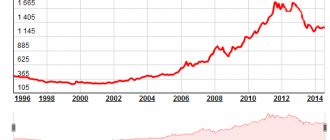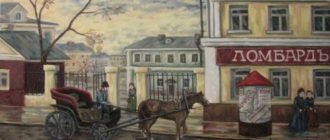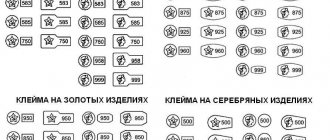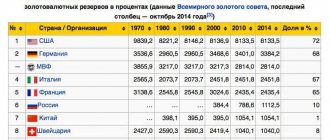Gold is an eternal material, valued throughout the centuries by both master jewelers and buyers of their products. To make the right choice, you need to have useful information. Which Russian jewelry brands are the most popular? We immediately introduce you to the leaders of jewelry brands.
TOP
- Karatov
- Thousands of high quality jewelry
- Products made of gold and silver
- Guarantee on all jewelry
- Author's product design
- Our assessment
Buy jewelry from the Karatov brand
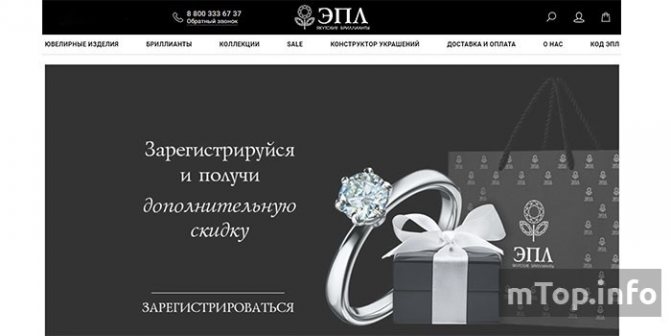
- EPL. Yakut diamonds
- Patent for the “FIRING ICE” cutting method
- Our own school of jewelers and cutters
- Extensive network of retail stores
- Award "Best Russian Exporter"
- Our assessment
Buy jewelry from the EPL brand. Yakut diamonds

- Sokolov
- Production at Diamant plant
- International Quality Standard Certificate
- Eastern European leader in the number of jewelry produced
- Stores in Russia and Europe
- Our assessment
Buy jewelry from the Sokolov brand
How to buy gold jewelry without the risk of buying a fake? What to look for when buying inlaid jewelry? What to choose – timeless classics or modern style? You will find answers to all these questions in this article.
TOP Russian jewelry brands
The history of gold mining and jewelry production in Russia goes back many centuries. However, historically it turned out that the last century was not the best period for this line of activity. At a time when Western jewelry houses were conquering the market by increasing variety and originality, Soviet products were characterized by a lack of distinctive features and uniformity.
However, everything changed in the 90s of the twentieth century. The modern Russian jewelry industry is gradually acquiring its loyal customers and is trying to adhere to global trends, working for the future. There are several of the most famous and popular Russian brands.
1 – Karatov
The Russian brand Karatov was created on a base in Kostroma. The holding team has almost 2 thousand employees. The company's wholesale network covers major cities in Russia, Europe, the USA, and CIS countries.
gold Karatov
- Included in the TOP 3 best jewelry manufacturers in Russia
- All products come with a factory warranty
- Jewelry is developed according to original designs
Customer rating 4.6.
2 - EPL. Yakut diamonds
– manufacturer of diamond jewelry from the Republic of Sakha. It has its own cutting and jewelry production, a network of retail outlets and an online store.
- The patented FIRING ICE cutting method is used.
- Our own school of jewelers and cutters
- The brand was awarded five times by the Ministry of Industry and Trade of the Russian Federation as “The Best Russian Exporter”
Customer rating 4.5.
3 – Sokolov
Just like Almaz-Holding, it has a history of more than 25 years. The brand produces jewelry, watches, and children's collections.
gold Sokolov
- Production
- Stores in Russia and Europe, including Switzerland
- International Quality Standard Certificate
- Eastern European leader in the number of jewelry produced
Customer rating 4.5.
4 – Adamas
Like many other brands, this company was founded in the early 90s of the twentieth century.
- Holds a patent for a unique gold alloy
- Extensive network of retail stores with branches in Eastern Europe and China
- Winner of the “Product of the Year”, “Best Jewelry” and other awards
- Winner of the title of the most popular brand in Runet
Customer rating 4.5.
5 - KYuZ
The Kostroma Jewelry Factory, known to everyone under the abbreviation KYUZ or KOYUZ, has been operating since 1939 - for 80 years now.
gold KYuZ
- Own full production cycle
- Network of branded stores
- Winner of international diplomas and awards
- Part of the Krasnoselsky Jewelryprom association
Customer rating 4.14.
6 - Esthete
The plant began its work almost 30 years ago on the basis of a family workshop. Now it is one of the leaders in the jewelry industry, and its owner is the chairman of the Guild of Russian Jewelers.
gold Esthete
- One of the largest production facilities in Europe
- A network of its own branded stores, partner stores, as well as Russia’s first “Jewelry Street”
- Also produces products under the Gevorkyan brand
Customer rating 3.91.
7 – Bronnitsky jeweler
The company comes from the 90s. The brand is manufactured at its own jewelry factory in the city of Bronnitsy, Moscow region, and at subsidiaries in China. The manufacturer has its own trading house, retail stores, and an online store.
gold Bronnitsky jeweler
- Bronnitsky Jewelry Factory was founded in 1924.
- Products are sold in more than 2000 retail outlets in the Russian Federation and neighboring countries
- Most retail stores operate on a franchise basis
Customer rating 3.6.
8 — Almaz-Holding
This brand has been around for over 25 years. This diversified brand sells not only jewelry, but also silverware.
Diamond-holding jewelry
- Production of Krasnoselsky Yuvelirprom
- About 200 retail stores, including in China
- Exports almost 30% of total products abroad
Customer rating: 3.6.
9 – Moscow Jewelry Factory
One of the most famous and oldest jewelry productions, whose history goes back almost a hundred years.
Moscow Jewelry Factory gold ring with diamonds, R108-105010AQQUDR, size 16.5
gold Moscow jewelry factory
- Own production
- Has a network of branded stores of more than 300
- Winner of professional competitions
- Certified to international quality standards
Customer rating 3.05.
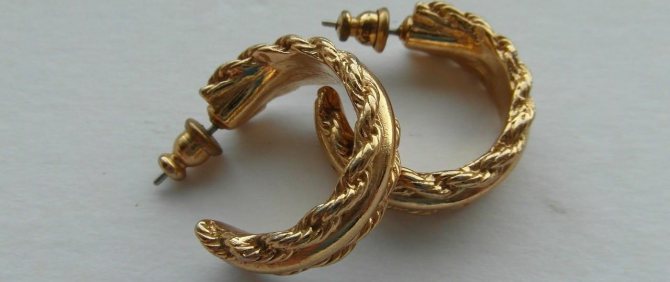
Silver and products made from it are one of the most common types of gifts. If you are planning to buy just such a gift, read The best silver jewelry - TOP 5 manufacturers →
How much Russian gold is stored in the United States and why

LDPR leader Vladimir Zhirinovsky proposed withdrawing gold reserves
from the US Federal Reserve following Turkey.
It is noted that, according to Zhirinovsky, it is a “flawed logic” that Russian reserves will be safer abroad, since they “bring more dividends and are also insured against our internal corruption.”
Former Russian Minister of Economy Yevgeny Yasin has the opposite point of view.
“Firstly, I want to remind you that these gold reserves do not belong to Russia, but to its citizens. Is it beneficial for Russians to transfer reserves to the country? My impression is that no, because they do not have confidence that the state will promote their interests. I don't know what motivates Erdogan to withdraw gold reserves from the US, but I believe he has a belief that he has earned the right to be emperor of the Ottoman Empire, or at least modern Turkey. I don’t think we should follow his example,” said the former Minister of Economy.
Vladimir Zhirinovsky’s concerns are confirmed by Paul Craig Roberts, former assistant for economic policy to the US Treasury Secretary in the Ronald Reagan administration:
“None of the countries that store their gold in America will get it back. It has long been suspected in the global precious metals market that banks, on behalf of the Federal Reserve, used all available reserves to drive down gold prices over the past few years. And after the States spent their gold, they began to sell off what they had in storage. In my opinion, most of the gold reserves were depleted around 2011. By now, I think the American authorities no longer have any reserves of gold.”
Russia's gold reserves now amount to 1880 tons, which is slightly more than last year, i.e. stocks are growing. Two-thirds of the total gold and foreign exchange reserves of the Russian Federation are contained in the main depository of the Central Bank of our country. It is located in the city of Moscow, and its area is about 17,000 m2, of which 1,500 m2 is allocated for storing gold reserves.
For the last 15 years, the United States has categorically refused to audit its gold reserves (including bullions accepted for storage from Europe), and they refuse to give up the gold itself under all sorts of pretexts. And then there’s the “tungsten gold” scam. All this raises the suspicion that most of the gold in the United States has long been gone, including that which was once stored by someone else
.
Source https://zen.yandex.ru/media/yamal/skolko-rossiiskogo-zolota-hranitsia-v-ssha-5d2ea998fe289100adeac1a0
TOP 2 jewelry online stores
As a bonus, we offer two excellent online stores with jewelry from different brands.

- 585 Gold
- Jewelry from leading Russian and foreign brands
- Optics, watches, products for men
- Bonus system - 1 point = 1 ruble
- Delivery by courier, pickup
- Our assessment
Select jewelry for 585 Gold
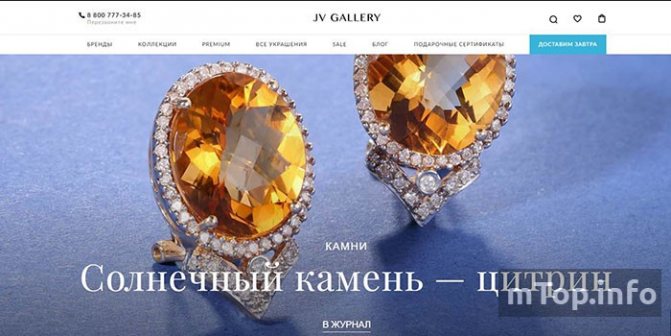
- JV Gallery
- Jewelry from budget and premium brands
- Electronic gift certificates
- Loyalty program - discounts from 5 to 30%
- Delivery throughout Russia and the CIS from 2 to 7 days
- Our assessment
Choose jewelry at JV Gallery
585/Gold
The 585/Zolotoy chain of stores has over 900 stores in 240 cities in Russia and the CIS. The company has an online store and pawn shops.
- The assortment includes jewelry and watches from leading Russian and foreign brands
- There is delivery by courier services, pickup from the nearest store
- Payment is made on the website or in cash to the courier
- There is a bonus system - a loyalty card with cashback and payment with accumulated points. 1 point = 1 ruble
JV Gallery
JV Gallery is an online store that brings together brands and designers from Europe, Asia, America, and Russia. The store offers delivery to your home or to a pickup point. Pickup is available from the showroom in Moscow.
- Jewelry from budget and premium brands
- Delivery throughout Russia and the CIS from 2 to 7 days
- Payment in cash, card upon receipt; map on the website
- Loyalty program assigning account status from Bronze to Brilliant with a discount from 5 to 30%
- Electronic gift certificates
Types of gold
Pure gold as a chemical element is an extremely soft material, does not have a pronounced color and is not at all wear-resistant. Therefore, the jewelry industry uses metal alloys containing gold in different proportions.
It is the percentage of pure material in the final product that is determined by the sample number - an imprint on the jewelry that confirms its authenticity. The number of different additives also determines the color of the alloy. There are 3 main types of gold by shade:
- Yellow (traditional - with the addition of silver and copper)
- White (alloy of gold, silver, palladium and platinum)
- Red (color saturation depends on the amount of copper)
There are also several additional colors, but jewelry made from them is extremely rare and expensive:
- Pale shades of green (an alloy of gold with silver and cadmium)
- Gray and blue gold (alloy with steel)
- Bright shades of green and blue (synthesis with rubidium and indium) - at the development stage, earlier experiments were successfully carried out in South Africa, but mass production was not launched due to economic inexpediency
- Violet (combination of gold and galium)
- Purple (aluminum included)
- Black (adding cobalt and chromium)
The last five types are not an alloy in the full sense of the word, since the procedure for their creation is based on intermetallic compounds.
Do you prefer platinum jewelry? Read The best platinum jewelry - world brands →
Authenticity and samples
The main indicator of the authenticity of the material from which the jewelry is made is the sample, the imprint of which can most often be found on the inside of the product, in an inconspicuous place. There are 3 main classification systems, of which only two are used:
- Metric. The numbers show the amount of gold as a percentage. In the USSR and Russia, 6 types of hallmarks existed and still operate: 375, 500, 585, 750, 958, 999 (bank gold)
- Carat. This system is followed by Europe and the USA. Shows the proportion of pure material in the product in carats, with a carat being equal to 1/24 of the mass. The most common markings are 9, 10, 14, 18 and 24 carats.
- Zolotnikovaya (found in antique jewelry, manufactured before 1927). To convert it to metric, you need to divide the original figure by 0.096.

In addition to the sample print, there are several other simple ways to check the product:
- Examine the jewelry with a magnifying glass, check that the recesses (if any) completely match the size of the stones.
- Pay attention to the inside, the better it is processed, the better the product.
- Drop the jewelry - upon contact with the surface, a clear “crystal” sound should be heard.
- When choosing a chain, try winding it around your fingers (if the flexibility of the weave allows it). It should unwind easily and without getting tangled in the links.
Lost gold of Russia
By historical standards, the First World War and the subsequent fall of the world's three largest empires occurred relatively recently. Researchers have at their disposal many official documents, memoirs of direct participants in the events and eyewitness accounts. Multi-ton collections of documents that are stored in public and private archives of dozens of countries make it possible, seemingly literally minute by minute, to restore the course of events at any point of space and time of interest to the researcher. However, despite such an abundance of sources, the history of those years still contains many mysteries and secrets that keep many historians, journalists and writers from sleeping peacefully. One of these historical secrets is the fate of the so-called “Kolchak’s Gold,” which has been sought for a long time and almost as unsuccessfully as the gold of Flint, Morgan and Captain Kidd, the Amber Room or the mythical “Gold of the Party.” In this case, we are talking about the gold reserves of Russia, which, of course, never belonged to Kolchak and went to the “Omsk ruler” by chance, after on August 6, 1918, the detachments of the White Guard General Kappel and the Czech legionnaires allied to him captured it in the basements of the Kazan Bank. It was to Kazan in 1914-1915 that valuables were evacuated from storage facilities in Warsaw, Riga and Kyiv. And in 1917, these reserves were replenished with gold from Moscow and Petrograd. As a result, 40,000 pounds of gold (about 640 tons) and 30,000 pounds of silver (480 tons) in bars and coins, precious church utensils, historical values, jewelry of the royal family (154 items, including the necklace of Empress Alexandra Feodorovna and strewn the sword of the heir Alexei with diamonds). Translated into modern prices, Kolchak received $13.3 billion worth of gold and silver alone. The cost of historical relics and jewelry cannot be calculated.
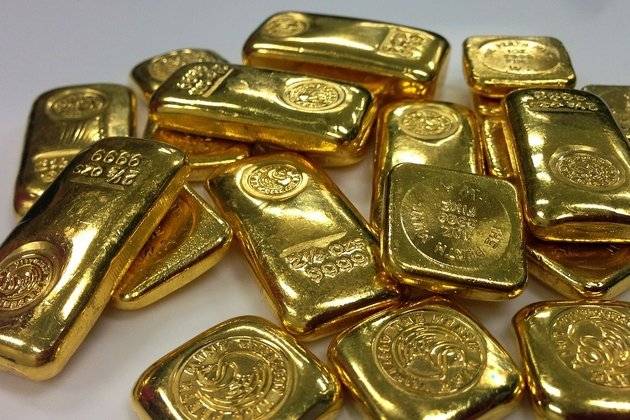
A.V. Kolchak, who came to power in the Trans-Ural part of the former Russian Empire on November 18, 1918, is certainly one of the most tragic figures in Russian history. His tragedy was that in the decisive moments, which Stefan Zweig called “the finest hours of humanity,” he, like Nicholas II, found himself in the wrong place and could not adequately respond to the challenges of this difficult time. At the time of coming to power, Kolchak was already a famous polar explorer and a talented admiral, but, unfortunately, he turned out to be an absolutely mediocre politician and an extremely incompetent administrator. It was this inconsistency with the role he assumed that destroyed him.
In fact, Alexander Kolchak, who came from America, unlike Kornilov, Denikin, Wrangel or Yudenich, found himself in a very advantageous situation. He was known and even popular among wide sections of the Russian population as an Arctic explorer and a hero of the Russo-Japanese War, was not involved in corruption and political scandals, and no one associated his personality with the “vile crimes of the old regime.” The Bolsheviks in Siberia were finished by June 8, 1918. The fact is that just at that time the 40,000-strong Czechoslovak legionary corps was evacuated through the Trans-Siberian Railway to France. After an attempt to disarm one of the legionary echelons in Chelyabinsk, the corps leadership gave the order to seize all stations along the route and arrest all members of the Bolshevik Soviets. As a result, very moderate “governments”, “directories”, “dumas” and “committees” came to power in large cities, where the Socialist Revolutionaries and Mensheviks lived peacefully with the Cadets and Octobrists and acted in close contact with social democratic parties and official representatives of the countries Entente. It was quite possible to deal with and negotiate with these politicians. The Trans-Siberian Railway was now controlled by a disciplined and well-armed Czechoslovak Legionary Corps. There were many officers in the army who were ready to fight not for the overthrown Nicholas II, but for a great and indivisible Russia. The anarchist gangs that ruled the outback, mainly in the east of the country, acted separately and did not represent a serious military force. If in Kolchak’s army there had been a person with the organizational skills and charisma of Trotsky, all local Semyonovs would inevitably have faced the fate of Shchors, Kotovsky, Grigoriev and Makhno: the most adequate atamans would have become national heroes, and the most uncontrollable of them would have been destroyed or driven out of the cordon. If the Soviet government was in complete international isolation, and there was nowhere to wait for help, then the White Guard leaders, the recognized head of which was A.V. Kolchak, as junior and inferior partners, still had fairly wide contacts with their Entente allies, who, however, , helped them more in words. However, in 1918, troops from the Entente countries landed in large port cities of the former Russian Empire - a total of about 220,000 soldiers from 11 countries of the world, and 150,000 of them were in the Asian part of Russia (there were 75,000 Japanese alone). The armies of the interventionists behaved quite passively, took part in hostilities reluctantly and entered into combat contact with the Red Army or partisan formations only in the immediate vicinity of their places of deployment. But they performed security and police functions and provided the White Guards with serious moral support. The internal political situation in the territory controlled by Kolchak was also quite favorable. The White Guard armies operating in the European part of Russia, which even the Entente allies sometimes ironically called “wandering armies without a state,” earned universal hatred through “requisitions” and forced mobilizations. For some reason, the leadership of the “volunteers” was confident that the population of the cities and villages along their route should feel a sense of deep gratitude for the liberation from the tyranny of the Bolsheviks and on this basis supply their liberators with everything they needed practically free of charge. The liberated population, to put it mildly, did not share these views. As a result, even wealthy peasants and the bourgeoisie preferred to hide their goods from the White Guard quartermasters and sell them to European merchants. So, in September 1919, the owners of the Donbass mines sold several thousand wagons of coal abroad, and only one wagon, reluctantly, was handed over to Denikin. And in Kursk, instead of the two thousand requested horseshoes, Denikin’s cavalry received only ten. In Siberia, all state structures functioned, the population at first was quite loyal: officials continued to perform their functional duties, workers and artisans wanted to work and receive a fair salary, peasants were ready to trade with everyone who had the money to buy their products. Kolchak, who had practically inexhaustible resources at his disposal, not only could, but had to win the favor of the civilian population, suppressing robberies and looting with the most decisive measures. In such conditions, Napoleon Bonaparte or Bismarck would have brought order to the territory under their control in two or three years, restored the integrity of the country and carried out all the long-overdue reforms and transformations. But Kolchak was neither Napoleon nor Bismarck. For a very long time, gold lay as a dead weight and was not used to achieve important political goals. Moreover, Kolchak ordered even a basic audit of the Gold Reserve that had fallen into his hands only six months later - in May 1919, when it was already slightly “pinched” by the staff officers, greedy quartermasters and the Czechs guarding it. The remaining valuables were divided into three parts. The first of them, consisting of 722 boxes of gold bars and coins, was transported to the rear of Chita. The second part, which included the treasures of the royal family, precious church utensils, historical and artistic relics, was kept in the city of Tobolsk. The third part, the largest, worth more than 650 million gold rubles, remained under Kolchak in his famous “golden train”.
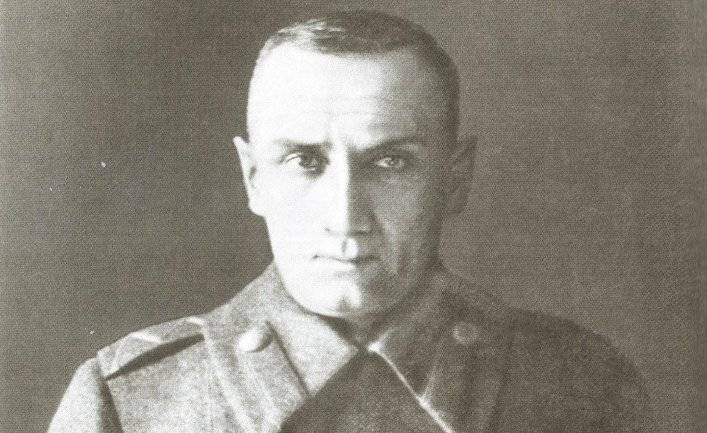
After an audit of the valuables he inherited, Kolchak decided to use part of the gold to purchase weapons from the “allies” of the Entente. Huge funds were allocated for the purchase of weapons from the “allies” of the Entente. The allies, savvy in commercial matters, did not miss their chance and famously fooled the Omsk dictator around their finger, deceiving him not once, but three times. First of all, as payment for recognizing Kolchak as the supreme ruler of Russia, they forced him to confirm the legality of the separation of Poland (and with it Western Ukraine and Western Belarus) and Finland from Russia. And Kolchak was forced to leave the decision on the separation of Latvia, Estonia, the Caucasus and the Trans-Caspian region from Russia to the arbitration of the League of Nations (note dated May 26, 1919, signed by Kolchak on June 12, 1919). This shameful treaty was no better than the Brest Peace Treaty signed by the Bolsheviks. Having received from Kolchak, in fact, an act of surrender of Russia and recognition of it as the defeated side, the Entente countries expressed their readiness to sell him absolutely unnecessary outdated weapons intended for disposal. However, since they had no confidence in the stability of his government, and they feared claims from the victors, Kolchak was told that his gold would be accepted at a price below the market price. The admiral agreed to this humiliating demand, and by the time of his evacuation from Omsk (October 31, 1919), the gold reserves had decreased by more than a third. The allies not only delayed deliveries in every possible way, but also most shamelessly robbed the overly trusting “supreme ruler of Russia.” The French, for example, confiscated Kolchak’s gold, intended for the purchase of airplanes, to pay off the debt of the Tsarist and Provisional governments. As a result, the allies safely waited for the fall of Kolchak, and the remaining unspent funds disappeared without a trace in the largest banks of Great Britain, France and the USA. But the Europeans and Americans fulfilled at least part of their obligations. The Japanese, who in October-November 1919 received from Kolchak gold bars worth the equivalent of 50 million yen and a contract for the supply of weapons to an army of 45,000, did not consider it necessary to send at least one rifle or box of ammunition to Russia. Later, representatives of the Japanese administration confiscated 55 million yen brought into the country by General Rozanov, and gold that General Petrov managed to export to Manchuria. If you believe the figures given in the reports of the National Bank of Japan, the country's gold reserves at this time increased more than 10 times.
Another part of the expenses of the Siberian Provisional Government was clearly inappropriate spending on the development and production in large quantities of the “Liberation of Siberia” and “Revival of Russia” orders made from noble alloys and decorated with precious stones. These orders remained unclaimed; moreover, not a single copy of them has survived to this day and they are known only in descriptions. More than 4 million dollars were spent on ordering new rubles from the USA. The manufactured banknotes were packed into 2,484 boxes, but they did not have time to deliver them to Russia before the fall of Kolchak. For several years, these banknotes were stored in a warehouse in the USA, and then they were burned, for which, by the way, two special ovens had to be built.
The only investment that brought real benefit was the transfer of 80 million gold rubles to the accounts of private individuals who were elected as their custodians and stewards. Some of them turned out to be decent people, and, despite certain abuses of their position as “patrons” and “benefactors,” they still allocated funds for the resettlement of Wrangel’s army in Serbia and Bulgaria, support for Russian schools, hospitals, and nursing homes. Benefits were also paid to the “families of heroes of the Civil War,” however, only to very high-ranking ones: the widow of Admiral Kolchak - Sofya Fedorovna, General Denikin, who took in the children of General Kornilov, and some others.
722 boxes of gold sent by Kolchak to Chita went to Ataman Semenov, but even this adventurer did not benefit from the unjustly acquired wealth. Part of the gold was immediately stolen by his own esauls, podesauls and simply ordinary Cossacks, who were lucky enough to take part in the capture and robbery of Chita, nominally controlled by Kolchak’s troops. 176 boxes were sent by Semenov to Japanese banks, from where they never returned. The other part of Semenovsky gold went to the Chinese. 20 poods in March 1920 were detained at Harbin customs and confiscated by order of Zhang Tso-Lin, the governor-general of the three Chinese provinces in Manchuria. Another 326 thousand gold rubles were captured in Hailer by the Governor-General of the Tsitsitskar Province, Wu Tzu-Chen. Semenov himself fled to the Chinese port of Dalny on an airplane, therefore, he could not take much gold with him. His subordinates had even less ability to transport gold abroad. Consequently, a certain part of the valuables disappeared without a trace in the vast expanses of Manchuria and Eastern Siberia and remained “at home” in treasures, traces of which are hardly possible to find.
The fate of the Tobolsk part of the Russian Gold Reserve turned out to be happier. On November 20, 1933, thanks to the help of the former nun of the Tobolsk Ivanovo Monastery, Marfa Uzhentseva, the jewelry of the royal family was found. According to the memo of the authorized representative of the OGPU for the Urals, Reshetov, “On the confiscation of royal valuables in the city of Tobolsk,” addressed to G. Yagoda, a total of 154 items were discovered. These include a diamond brooch weighing about 100 carats, three head studs with diamonds of 44 and 36 carats, a crescent with diamonds up to 70 carats, a tiara of the king’s daughters and the queen, and much more.
However, let's return to 1919. You have to pay for everything in life, and very soon Kolchak also had to pay for his incompetence and political failure. While he delegated the solution of the most important problems that concern every person in the country to the new Constituent Assembly, and used the wealth he received ineffectively and practically in vain, the Reds promised the people everything at once. As a result, Kolchak lost the support of the country's population, and his own troops were practically out of control. The victorious Red Army was inexorably approaching from the west, the entire east was engulfed in the partisan movement - by the winter of 1919. the number of “red” and “green” partisans exceeded 140,000 people. The unlucky admiral could only rely on the help of his Entente allies and the Czechoslovak corps. On November 7, 1919, the Kolchak government began evacuation from Omsk. In letter composition "D", the valuables remaining at the admiral's disposal were sent to the east. The train contained 28 wagons with gold and 12 wagons with security. Adventures did not take long to arrive. On the morning of November 14, at the Kirzinsky crossing, a train with security crashed into the “golden echelon”. Several wagons containing gold were smashed and looted. Two days later, near Novonikolaevsk (now Novosibirsk), someone disconnected as many as 38 wagons with gold and security from the train, which almost collapsed into the Ob. In Irkutsk, where Kolchak’s headquarters and the “golden echelon” were moving, by that time power already belonged to the Socialist Revolutionary Political Center. The Czechs, on whom the hapless “supreme ruler of Russia” so hoped, dreamed of returning to their homeland as soon as possible and did not intend to die along with the doomed admiral. Back on November 11, the corps commander-in-chief, General Syrovoy, issued an internal order, the meaning of which can be conveyed in a short phrase: “Our interests are above all.” When the leadership of the legionnaires learned that the partisans were ready to blow up bridges east of Irkutsk and tunnels on the Circum-Baikal Railway, Kolchak’s fate was finally decided. The partisans had already “warned” the Czechs once by blowing up tunnel No. 39 (Kirkidaysky) on July 23, 1918, which led to a cessation of traffic along the Trans-Siberian Railway for 20 days. The Czechs, who categorically did not want to become Siberians, turned out to be understanding people, and there was no need to waste scarce explosives on another tunnel or bridge. The official representative of the Allied powers, General M. Janin, also really wanted to return home - to beautiful France. Therefore, he announced to Kolchak that he would continue to the East only as a private individual. On January 8, 1920, Kolchak disbanded the last units that remained loyal to him and placed himself under the protection of the allies and Czech legionnaires. But this decision did not satisfy either side. Therefore, on March 1, 1920, in the village of Kaitul, the command of the Czechoslovak Legion signed an agreement with representatives of the Irkutsk Revolutionary Committee, according to which, in exchange for the right of free passage to the East along the Trans-Siberian Railway, Kolchak and 18 wagons containing 5143 boxes and 1578 bags of gold were transferred to the new government and other jewelry. The weight of the remaining gold is 311 tons, the nominal value is about 408 million gold rubles. This means that during Kolchak’s panicky retreat from Omsk, about 200 tons of gold worth approximately 250 million gold rubles disappeared. It is believed that the share of Czechoslovak legionnaires in the robbery of the admiral's train amounted to over 40 million rubles in gold. It is suggested that it was the “Kolchak gold” brought from Russia that became the main capital of the so-called “Legionbank” and was a powerful stimulus for the economic development of Czechoslovakia in the interwar period. However, the bulk of the stolen gold is still on the conscience of “domestic” thieves. One of them were the White Guard officers Bogdanov and Drankevich, who in 1920, together with a group of soldiers, stole about 200 kg of gold from the “admiral’s train”. The bulk of the loot was hidden in one of the abandoned churches on the southeastern shore of Lake Baikal. After this, events began to develop like in a Hollywood action movie, and while retreating to China, the robbers shot each other. The only survivor was V. Bogdanov, who later moved to the USA. In 1959, he made an attempt to export gold across the Turkish border. The KGB mistook him for a spy, placed him under surveillance and allowed him free movement around the country. Imagine the surprise of the security officers when in Bogdanov’s seized car they found not secret drawings or microfilm with photographs of closed defense enterprises, but two centners of gold bullion. Thus, the fate of another 160 tons of gold transported by letter train “D” remains unknown. These treasures clearly remained on Russian territory; moreover, there is every reason to believe that they are located not far from the Trans-Siberian Railway. The “Baikal” version is especially popular. Currently, there are two hypotheses according to which the lost gold is located at its bottom. According to the first, part of the gold reserves of the Russian Empire fell into the lake as a result of a train crash on the Circum-Baikal Railway near the Marituy station. Supporters of the other claim that in the winter of 1919-20, one of Kolchak’s detachments, which included a battalion of Black Sea sailors who enjoyed the admiral’s special trust, retreating east to Manchuria, had with him part of Russia’s gold reserves. The main roads were already controlled by Red Army units and partisans, so the decision was made to cross frozen Baikal on foot. Gold coins and bars were distributed into the shoulder bags of soldiers and into the wagons of officers. During this transition, most of the people froze on the way, and in the spring, when the ice melted, the corpses along with their luggage ended up at the bottom of the lake. They tried to look for gold in Baikal back in the 70s of the twentieth century. Then, at a depth of about 1000 meters, a bottle of gold sand and a gold bar were discovered. However, the belonging of these finds to “Kolchak’s gold” has not been proven, since individual gold miners and even small merchant carts have drowned in Baikal before. It is known, for example, that in 1866 part of a merchant convoy sank in the lake, which tried to pass on the still fragile ice. Legend has it that the sunken carts contained leather bags containing silver rubles. It soon became clear to everyone that if Kolchak’s treasures were located on the Baikal bottom, they were scattered extremely unevenly over a vast territory, and moreover, they were probably under a layer of silt and algae. The expected costs of underwater work were so high, and the result so unpredictable, that they decided to abandon further searches. However, the temptation to find at least part of the missing valuables is very great, so in 2008 the search for “Kolchak’s gold” at the bottom of Lake Baikal was resumed. That year, the research expedition “Worlds” began its work on Lake Baikal, during which, among other goals, scientists were tasked with trying to find traces of lost gold at the bottom of the great lake. From the end of July to the beginning of September, deep-sea bathyscaphes made 52 dives to the bottom of Lake Baikal, as a result of which oil-bearing rocks, seismogenic soils, as well as microorganisms unknown to science were discovered. In 2009, new dives of the Mir bathyscaphes took place (about 100 in total), but nothing reassuring has yet been discovered.
There is also evidence of Kolchak’s intention to send some of the valuables not by rail, but by river. The proposed route is as follows: from Omsk along the Ob, then through the Ob-Yenisei Canal, which, although it was not completed, was passable for ships, then along the Yenisei and Angara to Irkutsk. According to some reports, the Permyak steamship only managed to reach the village of Surgut, where the gold cargo was unloaded ashore and hidden. Legends claim that the location of the treasure was marked by a rail concreted in the ground. Later, this rail, which interfered with the excavation work, was allegedly cut off, and now it is almost impossible to find this place, which, however, does not bother some enthusiasts.
The Primorsky Territory also has its own legends about “Kolchak’s Gold”. There are certain reasons for them, because, in addition to the famous “golden echelon,” Kolchak managed to send 7 trains with jewelry to Vladivostok. From there, gold was sent to the United States, Western Europe and Japan as payment for weapons. Since Kolchak’s officials were not known for their honesty, it is quite possible that part of the gold was stolen by them and hidden “until better times.” Since the 20s of the last century, there have been persistent rumors among the population that weapons and gold bars that disappeared from the Pervaya Rechka station during the Civil War are buried in one of the caves in the foothills of the Sikhote-Alin ridge. According to RIA PrimaMedia, in 2009, an expedition organized by one of the travel companies in Vladivostok jointly with the Regional Research Institute of the Far Eastern State University attempted to penetrate one of the caves, but due to numerous collapses and landslides this was not possible.
They are also trying to look for lost valuables in Kazakhstan. One of the promising places is Petropavlovsk, where Kolchak’s “golden train” was located for some time in September 1919. From there the train was sent to Omsk, where it suddenly became clear that some of the carriages were loaded with weapons and ammunition instead of gold. It has been suggested that the stolen gold could have been hidden in a mass grave near the so-called Fifth Log, where executed communists, Red Army soldiers and people sympathizing with them were buried. Another point that attracts the attention of local treasure hunters is the North Kazakhstan village of Aiyrtau, which Kolchak and his large retinue visited in the winter of 1919 - two months before his death. One of the surrounding hills is still called Kolchakovka, or Kolchak Mountain.
However, all attempts made so far have not been successful, which gives skeptics reason to say that further searches are hopeless. Optimists are still confident that the gold of Tsarist Russia remaining on the territory of our country, like the treasures of Homer’s Troy, is waiting in the wings and for its Schliemann.
Gold Jewelry Styles
The art of jewelry is sensitive to historical eras, so styles of jewelry made from precious metals have changed over the centuries, adapting to general trends. Currently, there are both pure types of styles and their combinations, and the choice of decoration depends only on the taste and requirements of the owner. The most famous areas include:
- Gothic
- Baroque
- Rococo
- Classicism
- Art Nouveau (Art Nouveau)
- Art Deco
- Vanguard
- boho
- High tech
Almost all of these styles are still in demand today, although the history of some of them (for example, Gothic and Baroque) goes back more than three centuries.
Russian banks returned to buying gold for the first time since summer
MOSCOW, February 26 — PRIME. In January, Russian banks returned to increasing gold reserves for the first time since the end of summer 2020: they grew by 1.9%, or 835.5 kilograms, over the month, according to RIA Novosti calculations based on Central Bank data. The reversal in the behavior of banks can be explained by low prices for the precious metal, BCS World of Investments expert Mikhail Zeltser explained to the agency.
According to the Central Bank, at the beginning of February, 47 credit institutions had gold accounts, and their reserves amounted to 44.8 tons. At the same time, nine banks made purchases of the precious metal last month—for 4.2 tons.
The lion's share of gold purchases came from VTB, which in previous months was the leader in the sale of the precious metal: the bank increased its reserves by 3.3 tons in January, to 31.9 tons. In second place is Sovcombank, which increased its reserves by 667 kilograms to 2.6 tons. The Asian-Pacific Bank closed the top three in terms of reserves growth: it bought 131 kilograms of gold, increasing investments to 1.7 tons.
New circumstances. Who is pushing oil to $100 a barrel?
At the same time, some banks continued to sell the yellow precious metal: 15 credit institutions sold a total of 3.3 tons of gold. Sberbank recorded the largest reduction in reserves - 1.6 tons, as a result of which its investments in the precious metal decreased to 3.2 tons. In second place is Gazprombank, which reduced its reserves by 1.5 tons, to 2.1 tons of gold, and in third place is Lanta Bank, which reduced its investments by 102 kilograms, to 210 kilograms.
The remaining credit institutions, which in January increased or decreased their investments in the precious metal, had reserves of less than one ton as of February 1.
Although gold is the main metal asset for banks, they also make small investments in other metals. Thus, their reserves in January decreased in terms of tons of gold by 4.5%, to 8.4 tons. Another 6.1 tons of precious metals, converted into gold, were in transit with banks, in coins and commemorative medals.
Zeltser noted that banks’ demand for the precious metal is wave-like; statistically, jumps are observed twice a year - at the beginning of the year and by the summer. “Cyclicality is associated both with the expectation of financial turbulence, when gold performs a protective function, and with the pent-up demand of end consumers. Sometimes there is a price factor involved. Now gold has reached nine-month lows and may be of interest to certain types of investors,” says the expert.
Jewelry with inlay
If you want to choose jewelry with precious stones, it is important to pay attention to some details. Methods for securing stones may vary. There is a mechanical method in which the stone becomes a pommel and is secured in special teeth - this is often typical, for example, for wedding rings.
And there is inlay, when stones are inserted into special channels cut directly into the product. These products have features that you need to know about:
- Inlaid stones are vulnerable. Since they are not secured in the frame with anything other than special glue, there is a risk of falling out and being lost.
- Jewelry with inlays cannot be changed in size (which can easily be done, for example, with a ring in which the stone is mechanically fixed)
- For such products, ultrasonic cleaning is prohibited, as well as excessively high temperatures - under their influence, the glue may “float” and the stones will fall out.
Also read The best gold jewelry - TOP 10 world brands →




